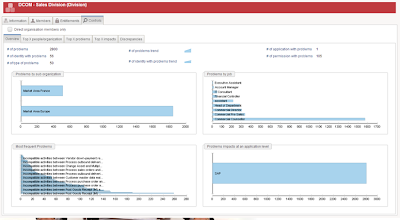I was trying to establish a replication agreement between 2 OpenDJ 2.4.6 servers.
[dsadm@appr1 opendj]$ bin/dsreplication enable --host1 appr1.abc.com --port1 4444\
> --bindDN1 "cn=directory manager" \
> --bindPassword1 password --replicationPort1 8989 \
> --host2 appr2.abc.com --port2 4444 --bindDN2 "cn=directory manager" \
> --bindPassword2 password --replicationPort2 8989 \
> --adminUID admin --adminPassword password --baseDN "o=openam" -X -n
Establishing connections ..... Done.
Checking registration information ..... Done.
Configuring Replication port on server appr1.true.th:4444 ..... Done.
Configuring Replication port on server appr2.true.th:4444 ..... Done.
Updating replication configuration for baseDN o=openam on server appr1.true.th:4444 ..... Done.
Updating replication configuration for baseDN o=openam on server appr2.true.th:4444 ..... Done.
Updating registration configuration on server appr1.true.th:4444 ..... Done.
Updating registration configuration on server appr2.true.th:4444 ..... Done.
Updating replication configuration for baseDN cn=schema on server appr1.true.th:4444 ..... Done.
Updating replication configuration for baseDN cn=schema on server appr2.true.th:4444 ..... Done.
Initializing registration information on server appr2.true.th:4444 with the contents of server appr1.true.th:4444 .....
Error during the initialization with contents from server
appr1.true.th:4444. Last log details: [19/Jul/2013:15:24:12 +0700]
severity="NOTICE" msgCount=0 msgID=9896349 message="Initialize From Replica
task quicksetup-initialize1 started execution". Task state: STOPPED_BY_ERROR.
Check the error logs of appr1.true.th:4444 for more information.
See /tmp/opends-replication-4857551577835267301.log for a detailed log of this
operation.
There was not any useful detail in /tmp/opends-replication-4857551577835267301.log. No luck.
So I started to debug ... By looking at the above error stack, I knew that the problem occurred only during initialisation. There was nothing wrong with replication configuration etc ... Then I realised the system administrator has iptables running!
Bingo! Port 8989 (used by the OpenDJ Replication Server) is not opened.
The error message was not useful at all. :)
.




























